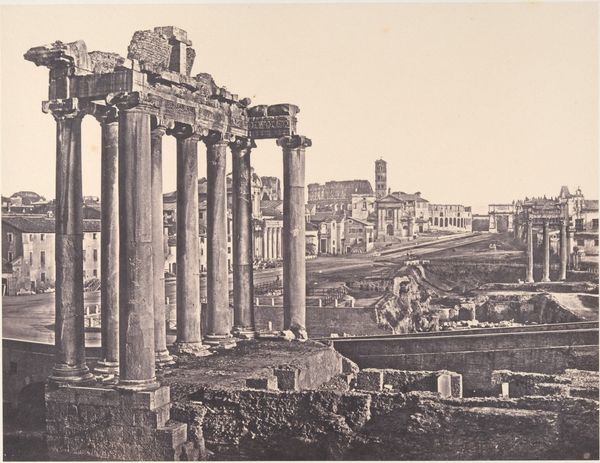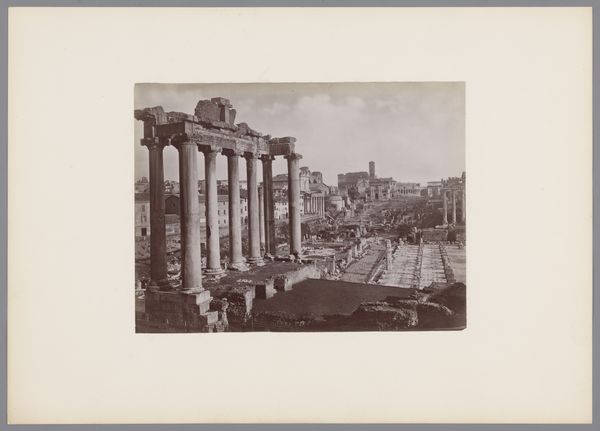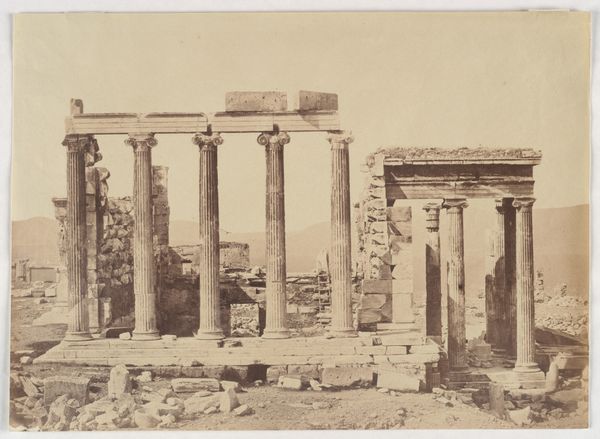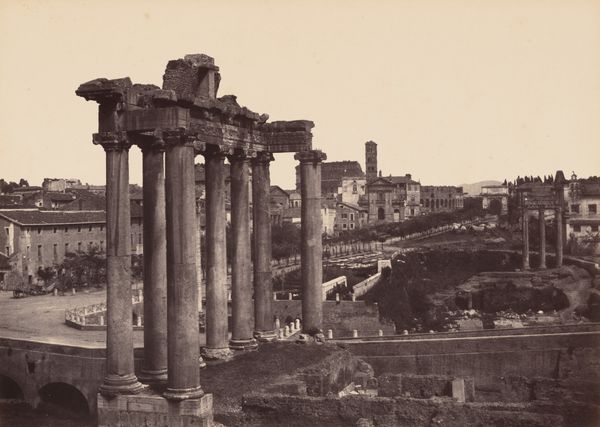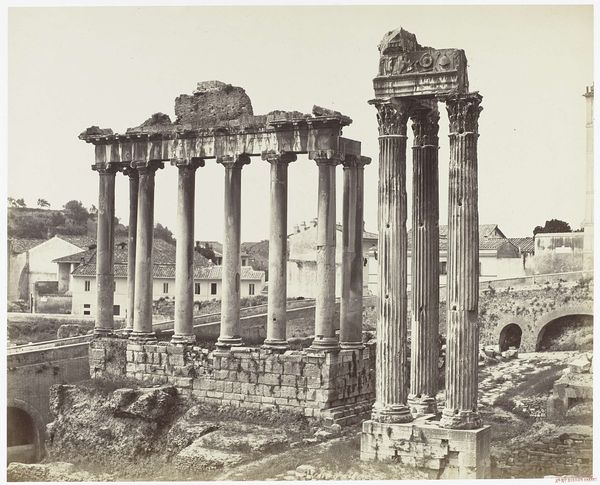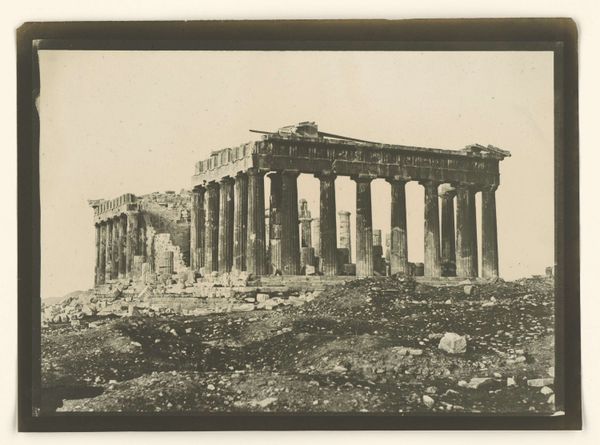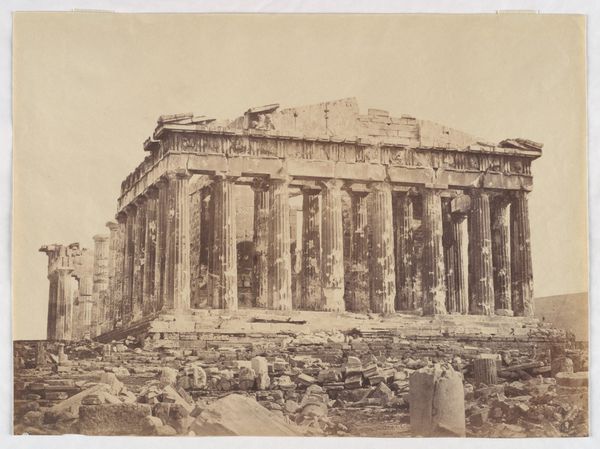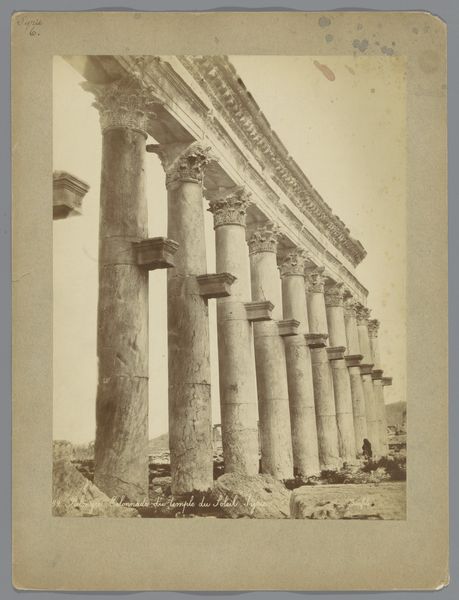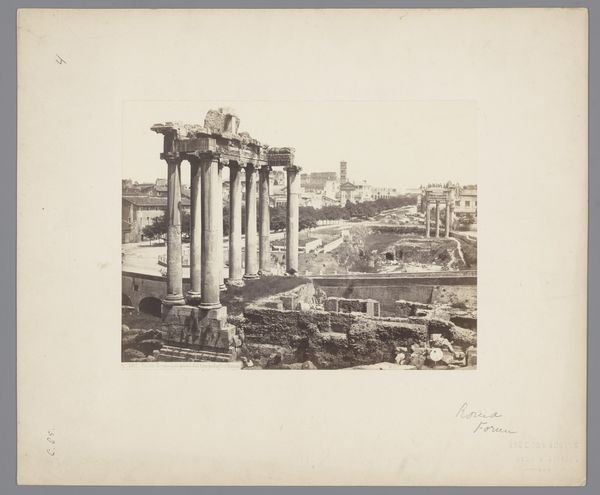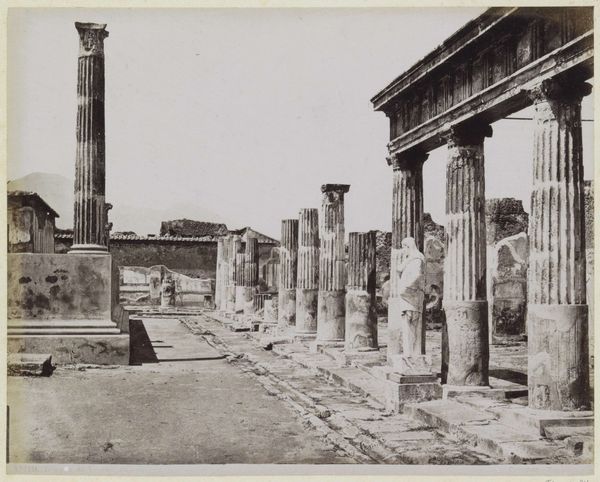![[Temple of Concord, Rome] by Calvert Richard Jones](/_next/image?url=https%3A%2F%2Fd2w8kbdekdi1gv.cloudfront.net%2FeyJidWNrZXQiOiAiYXJ0ZXJhLWltYWdlcy1idWNrZXQiLCAia2V5IjogImFydHdvcmtzL2QzZGM5MjQ0LWFkNWYtNDI5Ni05YzFlLTM2NDdiYzAyMzYxZC9kM2RjOTI0NC1hZDVmLTQyOTYtOWMxZS0zNjQ3YmMwMjM2MWRfZnVsbC5qcGciLCAiZWRpdHMiOiB7InJlc2l6ZSI6IHsid2lkdGgiOiAxOTIwLCAiaGVpZ2h0IjogMTkyMCwgImZpdCI6ICJpbnNpZGUifX19&w=3840&q=75)
photography, gelatin-silver-print
#
landscape
#
photography
#
ancient-mediterranean
#
column
#
gelatin-silver-print
#
19th century
#
cityscape
Copyright: Public Domain
Editor: This gelatin silver print, "[Temple of Concord, Rome]", was captured by Calvert Richard Jones sometime in the 1850s. The towering columns of the ancient ruin against the cityscape create a striking juxtaposition. What kind of statement do you think Jones was trying to make here? Curator: This photograph allows us to consider the legacy of power structures. Jones, working within the early days of photography, captures not just an image of Roman grandeur, but also a moment in the construction of Western identity. Look at how the ruined temple is framed. How does the photograph engage with the complex historical, cultural, and political contexts of 19th-century Europe? Editor: I see what you mean. It's easy to just see the beautiful ruin, but thinking about how Jones chose to present it… I guess it's about power? Rome, then and now. Curator: Precisely. The 'Temple of Concord' speaks of a desire for harmony, for unified rule, but seen through the lens of colonial expansion and the often violent project of nation-building, the photograph invites a critical interrogation of those ideals. Do you see a connection between this pursuit and the social dynamics of today? Editor: It’s like he's hinting at the fallibility of empires, a warning maybe? And definitely relevant today, given how power is still unevenly distributed across the globe. I hadn't considered the photograph as a political statement before. Curator: Art doesn’t exist in a vacuum. Consider the way we preserve certain narratives while erasing others. It changes how we view art, doesn’t it? Editor: Definitely. It makes me want to look more deeply into the context behind every artwork, not just at its surface beauty.
Comments
No comments
Be the first to comment and join the conversation on the ultimate creative platform.
